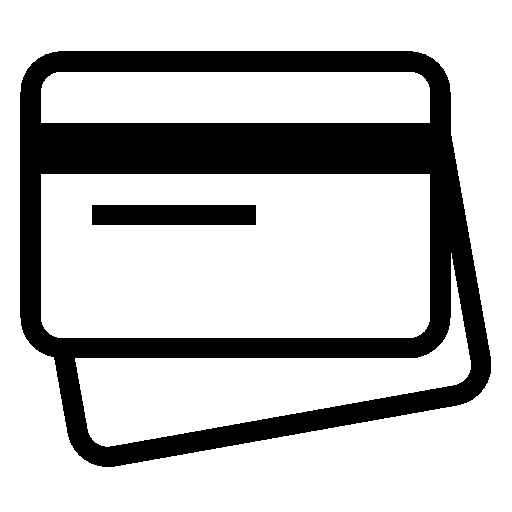When it comes to managing finances, using a debit card is one of the most convenient methods for everyday transactions. However, not all debit cards are created equal. Depending on the financial institution, there may be various fees associated with using a debit card. Valleystar Credit Union Debit Card Fees, like many other credit unions and banks, has its own set of policies regarding debit card fees. In this article, we’ll explore Valleystar Credit Union Debit Card Fees in detail, what they entail, and how you can avoid them.
What is Valleystar Credit Union?
Valleystar Credit Union is a member-focused financial institution that serves individuals in the Roanoke, Virginia area. Offering a wide range of financial products, including savings and checking accounts, loans, and credit cards, Valleystar is committed to providing competitive rates and excellent customer service. Their debit cards are widely used by their members for convenient access to funds, making purchases, and managing their accounts.
Debit cards issued by Valleystar Credit Union are linked directly to a member’s checking account, and can be used for purchases, ATM withdrawals, and even online transactions. However, like many financial institutions, Valleystar has specific fees attached to the use of its debit card services. Understanding these fees is essential to avoid unnecessary charges and to get the most out of your banking experience.
Common Debit Card Fees at Valleystar Credit Union
While Valleystar Credit Union strives to offer low fees and a favorable experience for its members, there are still a few fees associated with using their debit card. Let’s take a look at some of the common ones you may encounter.
1. ATM Withdrawal Fees
One of the most common fees associated with debit cards is ATM withdrawal fees. While you can use your Valleystar debit card at any ATM, using ATMs outside of the Valleystar network or outside of the network’s partner ATMs may result in additional charges.
- In-Network ATM Withdrawals: Valleystar Credit Union provides free ATM withdrawals at their own ATMs and those in their shared branch network. Members can access thousands of ATMs nationwide for free, ensuring convenience and no extra cost.
- Out-of-Network ATM Withdrawals: If you use an ATM that is outside the Valleystar network, you may be subject to an out-of-network ATM fee. This fee can vary depending on the location of the ATM and the policies of the ATM operator. On average, this fee could range from $1.00 to $3.00 per transaction.
- Foreign ATM Fees: If you withdraw funds from an ATM located outside of the United States, Valleystar may charge a foreign ATM fee, typically around $2.50 per transaction. In addition, the ATM operator may also charge its own fee, leading to a total fee of up to $5.00 or more per withdrawal.
2. Overdraft Fees
Overdraft fees are another important consideration when using a debit card. If you attempt to make a purchase or withdrawal that exceeds your account balance, the transaction may be declined or result in an overdraft fee.
- Overdraft Protection: Valleystar offers overdraft protection options to help prevent overdraft fees. Members who opt into this service can link a savings account, credit line, or another source of funds to cover any overdrafts. However, there may be a fee for using overdraft protection, usually ranging from $30.00 to $35.00 per transaction.
- Insufficient Funds Fee: If you do not have overdraft protection and your account balance is insufficient to cover a transaction, Valleystar may charge an insufficient funds fee (NSF fee). This fee is typically around $30.00 per item, and multiple NSF fees can accumulate if several transactions are attempted with insufficient funds.
3. Foreign Transaction Fees
When using a debit card to make purchases outside the United States or online with foreign merchants, Valleystar may charge a foreign transaction fee. This fee is typically a percentage of the total purchase amount.
- Foreign Transaction Fee: Valleystar’s foreign transaction fee is usually around 1% of the total amount spent. This is typical for many financial institutions and is designed to cover the costs associated with currency conversion and international processing.
4. Replacement Card Fees
In the event that your Valleystar debit card is lost, stolen, or damaged, you may need to request a replacement card. Valleystar Credit Union charges a fee for issuing a new card in such cases.
- Replacement Card Fee: The fee for replacing a lost or damaged card typically ranges from $5.00 to $10.00, depending on the situation. If you need an expedited card, the fee may be higher.
5. Card Decline Fees
While not always the case, some institutions charge a fee when a debit card transaction is declined due to insufficient funds or other reasons. Valleystar typically does not charge a specific “decline” fee; however, if the transaction is declined due to insufficient funds, you may be charged an NSF fee, as mentioned earlier.
How to Avoid Debit Card Fees at Valleystar Credit Union
There are several steps you can take to avoid unnecessary fees while using your Valleystar debit card:
1. Use In-Network ATMs
To avoid ATM withdrawal fees, always use ATMs within the Valleystar network. Valleystar provides access to a large network of ATMs nationwide, so you should have no trouble finding one when needed.
2. Monitor Your Account Balance
Regularly monitor your account balance to ensure you have sufficient funds for purchases and withdrawals. Using online banking or the Valleystar mobile app can help you keep track of your account balance in real-time, reducing the risk of overdraft fees.
3. Set Up Overdraft Protection
Consider enrolling in overdraft protection to cover any transactions that may exceed your balance. Linking a savings account or credit line to your checking account can prevent overdraft fees from occurring.
4. Plan for International Transactions
If you plan to travel abroad or make purchases from foreign merchants, be mindful of foreign transaction fees. You may also want to consider using a credit card for international purchases, as some credit cards offer no foreign transaction fees.
5. Request a Replacement Card Promptly
If your debit card is lost or damaged, report it immediately to Valleystar to minimize any potential security risks. Request a replacement card as soon as possible to avoid delays, and be prepared for the associated fee.
Conclusion
Valleystar Credit Union offers its members a variety of financial products, including debit cards, with a few fees that are important to understand. By being aware of potential fees—such as ATM withdrawal fees, overdraft fees, foreign transaction fees, and card replacement charges—you can manage your finances more effectively and avoid unnecessary costs.
To ensure a smooth banking experience, make sure to use in-network ATMs, monitor your account regularly, and consider enrolling in overdraft protection. By taking these steps, you can make the most of your Valleystar debit card while minimizing any associated fees. Whether you’re withdrawing cash, making purchases, or traveling abroad, knowing how to manage these costs is key to keeping your finances in check.




